Tag #concept analysis
50 papers:
 Onward-2017-Kaijanaho #programming language #research
Onward-2017-Kaijanaho #programming language #research- Concept analysis in programming language research: done well it is all right (AJK), pp. 246–259.
 ICEIS-v2-2014-PereiraZS
ICEIS-v2-2014-PereiraZS - Extraction of Classes Through the Application of Formal Concept Analysis (DP, LZ, MS), pp. 275–282.
 SEKE-2014-SalmanSD14a #impact analysis #using
SEKE-2014-SalmanSD14a #impact analysis #using- Feature-Level Change Impact Analysis Using Formal Concept Analysis (HES, AS, CD), pp. 447–452.
 SEKE-2013-Al-MsiedeenSHUVS #mining #object-oriented #semantics #source code #using
SEKE-2013-Al-MsiedeenSHUVS #mining #object-oriented #semantics #source code #using- Mining Features from the Object-Oriented Source Code of a Collection of Software Variants Using Formal Concept Analysis and Latent Semantic Indexing (RAM, ADS, MH, CU, SV, HES), pp. 244–249.
 SAC-2013-SenatoreP #collaboration #fuzzy #navigation
SAC-2013-SenatoreP #collaboration #fuzzy #navigation- Lattice navigation for collaborative filtering by means of (fuzzy) formal concept analysis (SS, GP), pp. 920–926.
 CSMR-2012-GauthierM #case study #data access #modelling
CSMR-2012-GauthierM #case study #data access #modelling- Investigation of Access Control Models with Formal Concept Analysis: A Case Study (FG, EM), pp. 397–402.
 CSMR-2012-KazatoHOMHS #feature model #multi
CSMR-2012-KazatoHOMHS #feature model #multi- Feature Location for Multi-Layer System Based on Formal Concept Analysis (HK, SH, SO, SM, TH, MS), pp. 429–434.
 ICEIS-J-2012-AmarGMHLN12a #automation
ICEIS-J-2012-AmarGMHLN12a #automation- Finding Semi-Automatically a Greatest Common Model Thanks to Formal Concept Analysis (BA, AOG, AM, MH, TL, CN), pp. 72–91.
 ICEIS-v1-2012-AmarGMHLN #using
ICEIS-v1-2012-AmarGMHLN #using- Using Formal Concept Analysis to Extract a Greatest Common Model (BA, AOG, AM, MH, TL, CN), pp. 27–37.
 KDIR-2012-BressoGDNS #3d #learning #relational
KDIR-2012-BressoGDNS #3d #learning #relational- Formal Concept Analysis for the Interpretation of Relational Learning Applied on 3D Protein-binding Sites (EB, RG, MDD, AN, MST), pp. 111–120.
 MLDM-2012-MondalPMMB #approach #clustering #mining #using
MLDM-2012-MondalPMMB #approach #clustering #mining #using- A New Approach for Association Rule Mining and Bi-clustering Using Formal Concept Analysis (KCM, NP, AM, UM, SB), pp. 86–101.
 ASE-2011-SunL #using
ASE-2011-SunL #using- Using Formal Concept Analysis to support change analysis (XS, BL), pp. 641–645.
 DAC-2011-HeRK #embedded #generative #testing
DAC-2011-HeRK #embedded #generative #testing- Test-case generation for embedded simulink via formal concept analysis (NH, PR, DK), pp. 224–229.
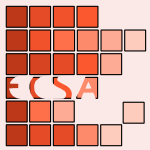 ECSA-2010-KiwelekarJ10a #architecture #communication #identification
ECSA-2010-KiwelekarJ10a #architecture #communication #identification- Identifying Architectural Connectors through Formal Concept Analysis of Communication Primitives (AWK, RKJ), pp. 515–518.
 CIKM-2010-KaytoueANK
CIKM-2010-KaytoueANK - Embedding tolerance relations in formal concept analysis: an application in information fusion (MK, ZA, AN, SOK), pp. 1689–1692.
 SAC-2010-BelohlavekV #constraints
SAC-2010-BelohlavekV #constraints- Background knowledge in formal concept analysis: constraints via closure operators (RB, VV), pp. 1113–1114.
 CSMR-2009-JoshiJ
CSMR-2009-JoshiJ - Concept Analysis for Class Cohesion (PJ, RKJ), pp. 237–240.
 WCRE-1999-YangPZ99a #data access #feature model #multi #semantics #using
WCRE-1999-YangPZ99a #data access #feature model #multi #semantics #using- Domain Feature Model Recovery from Multiple Applications Using Data Access Semantics and Formal Concept Analysis (YY, XP, WZ), pp. 215–224.
 ICEIS-AIDSS-2009-ElzingaPVD #detection
ICEIS-AIDSS-2009-ElzingaPVD #detection- Detecting Domestic Violence — Showcasing a Knowledge Browser based on Formal Concept Analysis and Emergent Self Organizing Maps (PE, JP, SV, GD), pp. 11–18.
 SAC-2009-DaiMSZ #towards #using
SAC-2009-DaiMSZ #towards #using- Towards “WYDIWYS” for MIMI using concept analysis (JD, RM, JS, GQZ), pp. 91–97.
 CSMR-2008-GlorieZHD #case study #evolution #experience #industrial #scalability #using
CSMR-2008-GlorieZHD #case study #evolution #experience #industrial #scalability #using- Splitting a Large Software Archive for Easing Future Software Evolution — An Industrial Experience Report using Formal Concept Analysis (MG, AZ, LH, AvD), pp. 153–162.
 SEKE-2008-DuZR #release planning #using
SEKE-2008-DuZR #release planning #using- Explaining Product Release Planning Results Using Concept Analysis (GD, TZ, GR), pp. 137–142.
 SAC-2008-BelohlavekV #dependence
SAC-2008-BelohlavekV #dependence- Adding background knowledge to formal concept analysis via attribute dependency formulas (RB, VV), pp. 938–943.
 CSMR-2007-LoeschP #product line #using #variability
CSMR-2007-LoeschP #product line #using #variability- Restructuring Variability in Software Product Lines using Concept Analysis of Product Configurations (FL, EP), pp. 159–170.
 ICPC-2007-PoshyvanykM #information retrieval #source code
ICPC-2007-PoshyvanykM #information retrieval #source code- Combining Formal Concept Analysis with Information Retrieval for Concept Location in Source Code (DP, AM), pp. 37–48.
 ICSM-2007-LuccaFT #classification #using #web
ICSM-2007-LuccaFT #classification #using #web- Web Pages Classification using Concept Analysis (GADL, ARF, PT), pp. 385–394.
 ICSE-2007-GanapathyKJJ #legacy #mining #using
ICSE-2007-GanapathyKJJ #legacy #mining #using- Mining Security-Sensitive Operations in Legacy Code Using Concept Analysis (VG, DK, TJ, SJ), pp. 458–467.
 SEKE-2006-ZhangKY #modelling #uml #web
SEKE-2006-ZhangKY #modelling #uml #web- UML Modelling Web Applications via Formal Concept Analysis (ZZ, JK, HY), pp. 532–535.
 MoDELS-2006-ArevaloFHN #abstraction #approach #modelling
MoDELS-2006-ArevaloFHN #abstraction #approach #modelling- Building Abstractions in Class Models: Formal Concept Analysis in a Model-Driven Approach (GA, JRF, MH, CN), pp. 513–527.
 MoDELS-2006-ArevaloFHN #abstraction #approach #modelling
MoDELS-2006-ArevaloFHN #abstraction #approach #modelling- Building Abstractions in Class Models: Formal Concept Analysis in a Model-Driven Approach (GA, JRF, MH, CN), pp. 513–527.
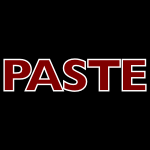 PASTE-2005-TallamG #algorithm #testing
PASTE-2005-TallamG #algorithm #testing- A concept analysis inspired greedy algorithm for test suite minimization (ST, NG), pp. 35–42.
 MLDM-2005-GuptaKB #classification #incremental #using
MLDM-2005-GuptaKB #classification #incremental #using- Incremental Classification Rules Based on Association Rules Using Formal Concept Analysis (AG, NK, VB), pp. 11–20.
 ASE-2005-LienhardDA #identification
ASE-2005-LienhardDA #identification- Identifying traits with formal concept analysis (AL, SD, GA), pp. 66–75.
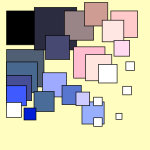 SCAM-2004-TourweM #mining #using
SCAM-2004-TourweM #mining #using- Mining Aspectual Views using Formal Concept Analysis (TT, KM), pp. 97–106.
 WCRE-2004-TonellaC #execution #mining
WCRE-2004-TonellaC #execution #mining- Aspect Mining through the Formal Concept Analysis of Execution Traces (PT, MC), pp. 112–121.
 ASE-2004-KhorG #algorithm #automation #branch #search-based #testing #using
ASE-2004-KhorG #algorithm #automation #branch #search-based #testing #using- Using a Genetic Algorithm and Formal Concept Analysis to Generate Branch Coverage Test Data Automatically (SK, PG), pp. 346–349.
 ASE-2004-SampathMSP #approach #scalability #testing #web
ASE-2004-SampathMSP #approach #scalability #testing #web- Scalable Approach to User-Session based Testing of Web Applications through Concept Analysis (SS, VM, ALS, LLP), pp. 132–141.
 ICSE-2004-Tonella #re-engineering
ICSE-2004-Tonella #re-engineering- Formal Concept Analysis in Software Engineering (PT), pp. 743–744.
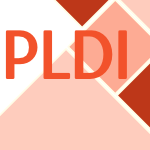 PLDI-2003-AmmonsMBL #debugging #specification
PLDI-2003-AmmonsMBL #debugging #specification- Debugging temporal specifications with concept analysis (GA, DM, RB, JRL), pp. 182–195.
 CSMR-2001-EisenbarthKS #component
CSMR-2001-EisenbarthKS #component- Derivation of Feature Component Maps by Means of Concept Analysis (TE, RK, DS), pp. 176–179.
 IWPC-2001-AntoniolDCM #legacy
IWPC-2001-AntoniolDCM #legacy- A Method to Re-Organize Legacy Systems via Concept Analysis (GA, MDP, GC, EM), pp. 281–290.
 IWPC-2001-EisenbarthKS #comprehension #execution #using
IWPC-2001-EisenbarthKS #comprehension #execution #using- Feature-Driven Program Understanding Using Concept Analysis of Execution Traces (TE, RK, DS), pp. 300–309.
 IWPC-2000-KuipersM #legacy
IWPC-2000-KuipersM #legacy- Types and Concept Analysis for Legacy Systems (TK, LM), pp. 221–230.
 CL-2000-FerreR #file system
CL-2000-FerreR #file system- A File System Based on Concept Analysis (SF, OR), pp. 1033–1047.
 ASE-1999-WatersRA #architecture #using
ASE-1999-WatersRA #architecture #using- Architectural Element Matching Using Concept Analysis (RW, SR, GDA), pp. 291–294.
 ICSE-1999-DeursenK #clustering #identification #using
ICSE-1999-DeursenK #clustering #identification #using- Identifying Objects Using Cluster and Concept Analysis (AvD, TK), pp. 246–255.
 PASTE-1998-Snelting #comprehension #framework
PASTE-1998-Snelting #comprehension #framework- Concept Analysis — A New Framework for Program Understanding (GS), pp. 1–10.
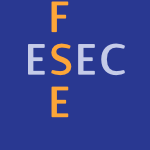 FSE-1998-SneltingT #re-engineering #using
FSE-1998-SneltingT #re-engineering #using- Reengineering Class Hierarchies Using Concept Analysis (GS, FT), pp. 99–110.
 ICSM-1997-SiffR #identification
ICSM-1997-SiffR #identification- Identifying modules via concept analysis (MS, TWR), pp. 170–179.
 ICSE-1997-LindigS #composition #legacy
ICSE-1997-LindigS #composition #legacy- Assessing Modular Structure of Legacy Code Based on Mathematical Concept Analysis (CL, GS), pp. 349–359.
 Onward-2017-Kaijanaho #programming language #research
Onward-2017-Kaijanaho #programming language #research ICEIS-v2-2014-PereiraZS
ICEIS-v2-2014-PereiraZS  SEKE-2014-SalmanSD14a #impact analysis #using
SEKE-2014-SalmanSD14a #impact analysis #using SEKE-2013-Al-MsiedeenSHUVS #mining #object-oriented #semantics #source code #using
SEKE-2013-Al-MsiedeenSHUVS #mining #object-oriented #semantics #source code #using SAC-2013-SenatoreP #collaboration #fuzzy #navigation
SAC-2013-SenatoreP #collaboration #fuzzy #navigation CSMR-2012-GauthierM #case study #data access #modelling
CSMR-2012-GauthierM #case study #data access #modelling CSMR-2012-KazatoHOMHS #feature model #multi
CSMR-2012-KazatoHOMHS #feature model #multi ICEIS-J-2012-AmarGMHLN12a #automation
ICEIS-J-2012-AmarGMHLN12a #automation ICEIS-v1-2012-AmarGMHLN #using
ICEIS-v1-2012-AmarGMHLN #using KDIR-2012-BressoGDNS #3d #learning #relational
KDIR-2012-BressoGDNS #3d #learning #relational MLDM-2012-MondalPMMB #approach #clustering #mining #using
MLDM-2012-MondalPMMB #approach #clustering #mining #using ASE-2011-SunL #using
ASE-2011-SunL #using DAC-2011-HeRK #embedded #generative #testing
DAC-2011-HeRK #embedded #generative #testing ECSA-2010-KiwelekarJ10a #architecture #communication #identification
ECSA-2010-KiwelekarJ10a #architecture #communication #identification CIKM-2010-KaytoueANK
CIKM-2010-KaytoueANK  SAC-2010-BelohlavekV #constraints
SAC-2010-BelohlavekV #constraints CSMR-2009-JoshiJ
CSMR-2009-JoshiJ  WCRE-1999-YangPZ99a #data access #feature model #multi #semantics #using
WCRE-1999-YangPZ99a #data access #feature model #multi #semantics #using ICEIS-AIDSS-2009-ElzingaPVD #detection
ICEIS-AIDSS-2009-ElzingaPVD #detection SAC-2009-DaiMSZ #towards #using
SAC-2009-DaiMSZ #towards #using CSMR-2008-GlorieZHD #case study #evolution #experience #industrial #scalability #using
CSMR-2008-GlorieZHD #case study #evolution #experience #industrial #scalability #using SEKE-2008-DuZR #release planning #using
SEKE-2008-DuZR #release planning #using SAC-2008-BelohlavekV #dependence
SAC-2008-BelohlavekV #dependence CSMR-2007-LoeschP #product line #using #variability
CSMR-2007-LoeschP #product line #using #variability ICPC-2007-PoshyvanykM #information retrieval #source code
ICPC-2007-PoshyvanykM #information retrieval #source code ICSM-2007-LuccaFT #classification #using #web
ICSM-2007-LuccaFT #classification #using #web ICSE-2007-GanapathyKJJ #legacy #mining #using
ICSE-2007-GanapathyKJJ #legacy #mining #using SEKE-2006-ZhangKY #modelling #uml #web
SEKE-2006-ZhangKY #modelling #uml #web MoDELS-2006-ArevaloFHN #abstraction #approach #modelling
MoDELS-2006-ArevaloFHN #abstraction #approach #modelling MoDELS-2006-ArevaloFHN #abstraction #approach #modelling
MoDELS-2006-ArevaloFHN #abstraction #approach #modelling PASTE-2005-TallamG #algorithm #testing
PASTE-2005-TallamG #algorithm #testing MLDM-2005-GuptaKB #classification #incremental #using
MLDM-2005-GuptaKB #classification #incremental #using ASE-2005-LienhardDA #identification
ASE-2005-LienhardDA #identification SCAM-2004-TourweM #mining #using
SCAM-2004-TourweM #mining #using WCRE-2004-TonellaC #execution #mining
WCRE-2004-TonellaC #execution #mining ASE-2004-KhorG #algorithm #automation #branch #search-based #testing #using
ASE-2004-KhorG #algorithm #automation #branch #search-based #testing #using ASE-2004-SampathMSP #approach #scalability #testing #web
ASE-2004-SampathMSP #approach #scalability #testing #web ICSE-2004-Tonella #re-engineering
ICSE-2004-Tonella #re-engineering PLDI-2003-AmmonsMBL #debugging #specification
PLDI-2003-AmmonsMBL #debugging #specification CSMR-2001-EisenbarthKS #component
CSMR-2001-EisenbarthKS #component IWPC-2001-AntoniolDCM #legacy
IWPC-2001-AntoniolDCM #legacy IWPC-2001-EisenbarthKS #comprehension #execution #using
IWPC-2001-EisenbarthKS #comprehension #execution #using IWPC-2000-KuipersM #legacy
IWPC-2000-KuipersM #legacy CL-2000-FerreR #file system
CL-2000-FerreR #file system ASE-1999-WatersRA #architecture #using
ASE-1999-WatersRA #architecture #using ICSE-1999-DeursenK #clustering #identification #using
ICSE-1999-DeursenK #clustering #identification #using PASTE-1998-Snelting #comprehension #framework
PASTE-1998-Snelting #comprehension #framework FSE-1998-SneltingT #re-engineering #using
FSE-1998-SneltingT #re-engineering #using ICSM-1997-SiffR #identification
ICSM-1997-SiffR #identification ICSE-1997-LindigS #composition #legacy
ICSE-1997-LindigS #composition #legacy











